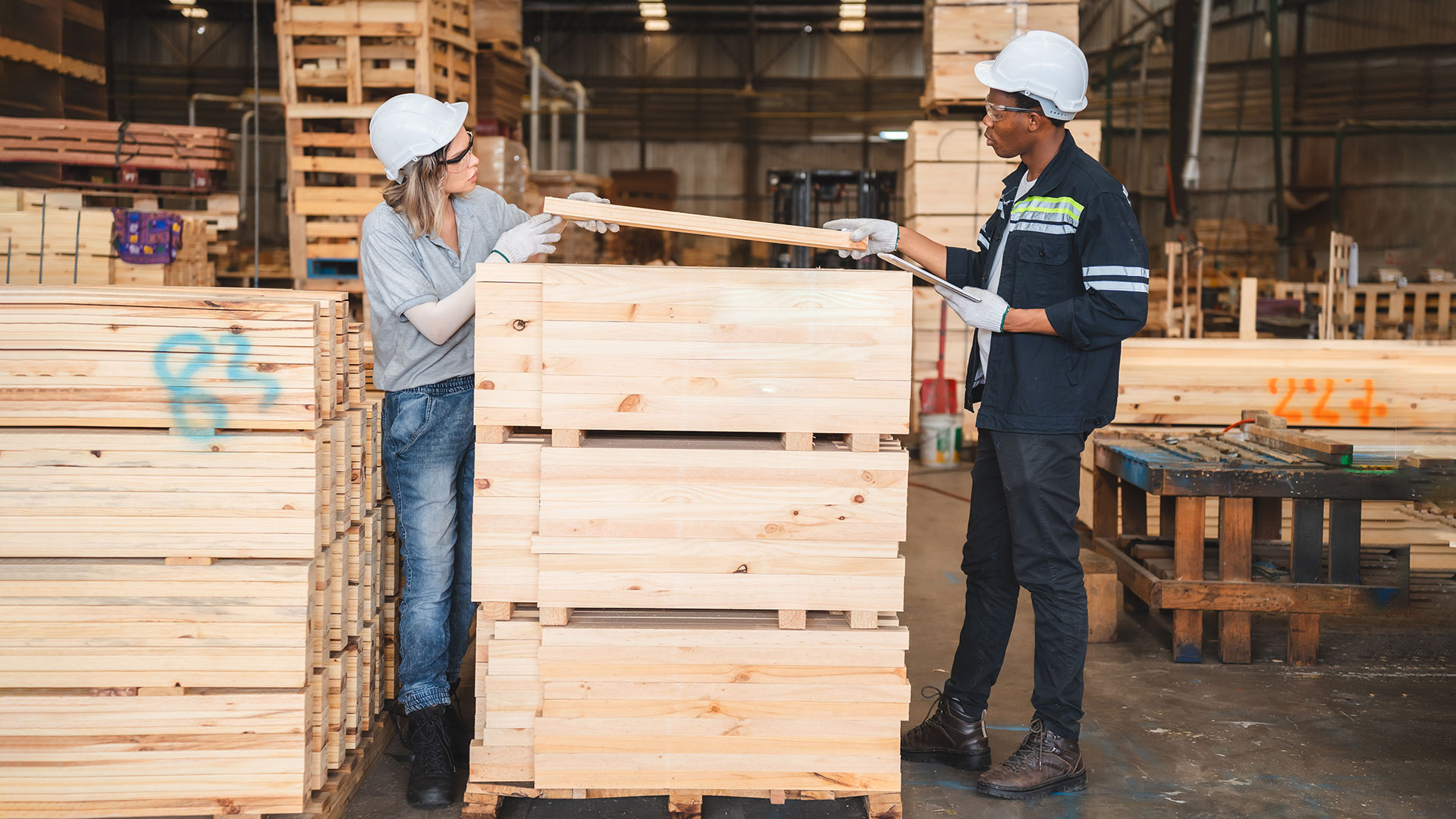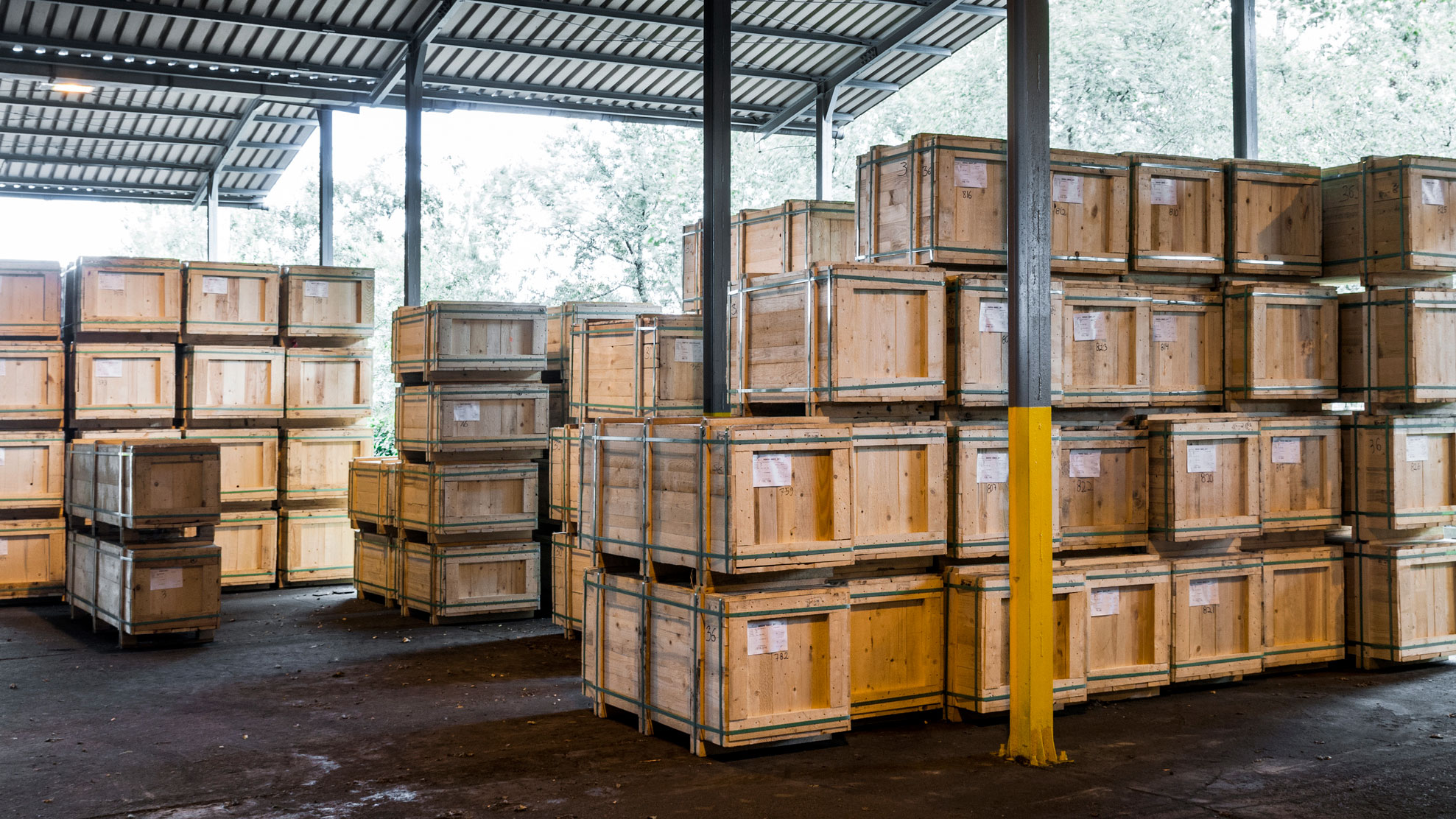Shipping fragile or high-value goods from Ottawa or Eastern Ontario? A standard box and some bubble wrap won’t cut it. Whether it’s industrial machinery headed to a job site, precision electronics bound for a client, or artwork on its way to a gallery—small mistakes can lead to big problems.
The right crate protects shipments from damage, prevents costly delays, and keeps freight charges under control. Crates that are the wrong size, made from non-compliant materials, or packed without proper support can put your shipments at risk.
Here are five costly crating mistakes—and how to make sure your shipments arrive safely, every time.
1. Choosing the Wrong Crate Materials
It’s tempting to cut costs by using cheap materials, but that decision can cause major headaches. Choosing the right industrial crate can make a huge difference. Wood that isn’t heat-treated can crack in extreme cold, warp in humidity, or even be rejected at international borders due to pest contamination risks.
Ottawa’s freezing winters and humid summers can take a toll on crates built with lower-quality materials. A crate that seems sturdy in a warehouse might not hold up once it’s exposed to sub-zero temperatures or moisture-laden air. That’s why heat-treated, ISPM-15-certified wood is a must, especially for international shipping. Without it, shipments can be held up—or worse, sent back—due to customs regulations.
For heavier items, reinforced lumber or high-density plywood is a smarter choice. These materials add strength without excessive weight, helping protect shipments from rough handling and long-distance transport stresses.
2. Poor Fit: Crates That Are Too Big or Too Small
A crate that’s too large is more than just wasted space. You run the risk of your items shifting in transit, increasing the chance of damage. On the other hand, a crate that’s too tight can put unnecessary pressure on fragile goods. Both scenarios lead to expensive problems.
Weight distribution also matters. A poorly balanced crate can become unstable in transport, especially on long hauls over uneven roads or rough seas. Shipments traveling from Ottawa to destinations across Canada or overseas may go through multiple transfers, making stability even more important.
Some unique, specialized items may require custom crates designed to match their exact dimensions, weight, and fragility. AML Crating’s state-of-the-art design software creates precise crating blueprints to ensure maximum protection and stability during transit. Custom-built crates ensure a snug, balanced fit. Reinforced bases, internal bracing, and cushioning further stabilize your shipment, preventing tipping, sliding, or impact damage.
3. Skimping on Internal Protection
A crate is only as good as the cushioning inside. While standard bubble wrap or packing peanuts might work for smaller consumer packages, for cargo like industrial shipments, electronics, and artwork, you probably need more specialized protection.
Vibration, shock, and impact during transit can all cause damage, even if the crate itself holds up. Without proper cushioning, delicate items can shift and crack. Electronics, for instance, are particularly vulnerable to excessive vibration, which can loosen internal components and cause performance issues.
If your business ships valuable goods through high-traffic hubs like Toronto or Montreal, added protection is worth the investment. Packing solutions like foam inserts, shock-absorbing panels, and custom bracing provide better security. For high-precision equipment, vibration-dampening materials will help minimize movement and protect sensitive parts.
4. Ignoring Climate Considerations
Crates don’t just need to withstand handling—they also need to protect contents from environmental conditions. Ottawa’s fluctuating temperature and humidity levels can lead to condensation, which can damage wood, metal, and electronic components.
Standard crates aren’t always enough for climate-sensitive items. A shipment sitting in a humid warehouse or exposed to freezing temperatures during transport can suffer mold growth, rust, or even electrical failures.
Protective measures such as sealed crates, vapour barriers, and desiccant packs help regulate internal conditions, preventing moisture buildup. Whether shipping antique furniture, medical devices, or aerospace components, climate-resistant packaging ensures goods arrive in top condition.
5. Overlooking Shipping Regulations
Failure to follow shipping regulations can lead to delays, fines, or even rejected shipments. Businesses shipping from Ottawa and Eastern Ontario must navigate both Canadian and international requirements, including ISPM-15 certification for wooden crates. Shipments that don’t meet these standards can be held up at borders or, in some cases, turned away entirely—creating costly disruptions.
Weight restrictions, labeling requirements, and customs documentation are just as critical. A crate that exceeds weight limits could trigger unexpected fees, while missing or incorrect paperwork can cause frustrating hold-ups at checkpoints.
Working with an experienced crating provider ensures shipments meet all necessary regulations. From ISPM-15 certification to precise weight distribution planning, a professionally built crate reduces risks and keeps shipments moving smoothly—even saving you money.
Get Crating Right the First Time
Avoiding these common pitfalls can save your business time, money, and unnecessary headaches. Whether shipping heavy machinery, high-tech equipment, or fragile goods, choosing the right materials and design makes all the difference.
AML Crating specializes in expert-built solutions for businesses across Ottawa and Eastern Ontario.
Need a custom crate? Contact us today for a quote.



